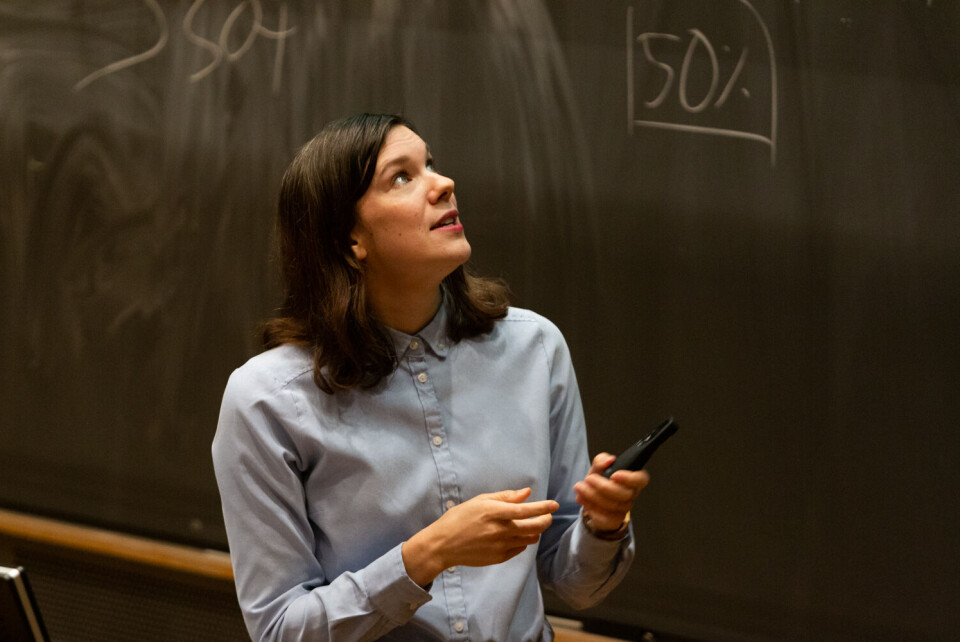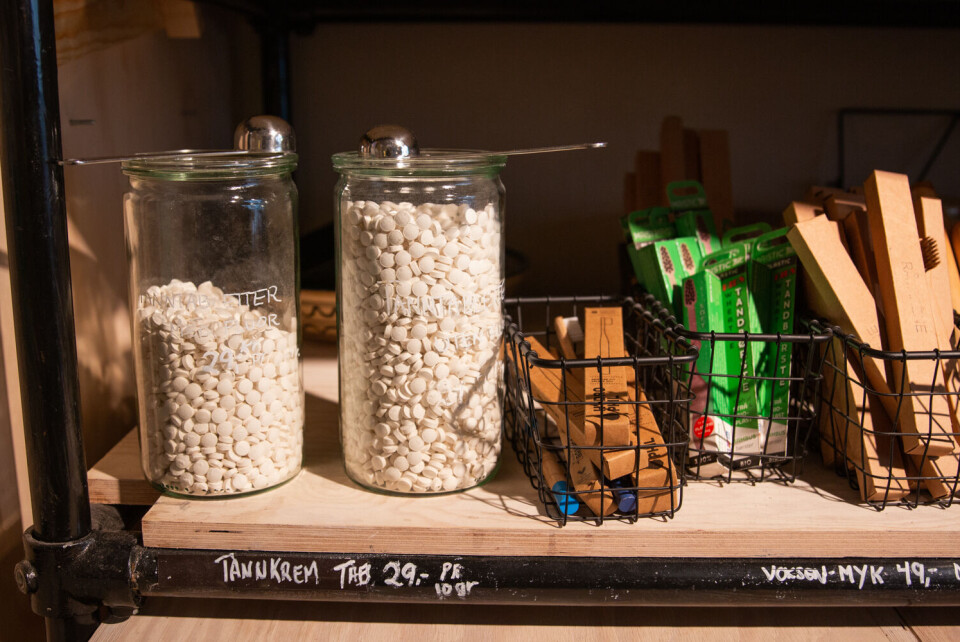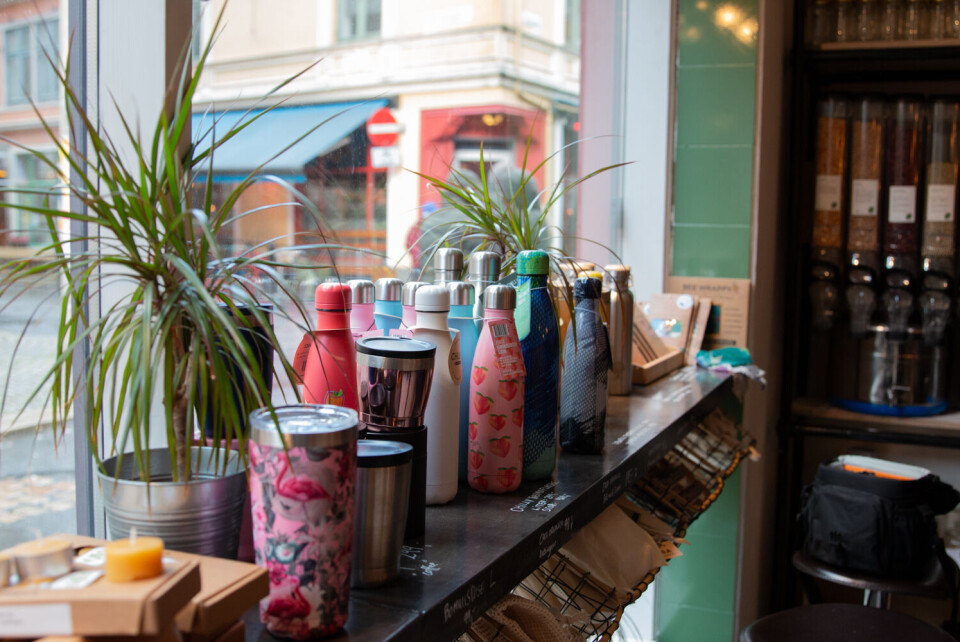English
How to Live «Zero Waste»
How can you, as a student, adapt your daily routine to live a more environment-friendly lifestyle? Here is the answer.

The «Zero-Waste-lifestyle» has been a topic of discussion over the course of the last couple of weeks during Sammen’s «Environmental Week» as well as FLYT, the literature festival for the youth. Here are some tips on how you can be more sustainable in your everyday life.
Is it Possible to Live Without Producing Waste?
Yes, according to Kristine Ullaland.She is the founder of «Zero Waste Norge» as well as the blog author of «GrønareKvardag». The last time she had to take the bins out was in 2015.
– If everyone would consume like us here in Norway, we would need 3,4 globes to compensate it, she says.
A big problem is that the waste is often times not being separated and doesn’t just end up in garbage incineration plants, but in nature. Ullaland says that ideally, we should be living in a circular system where everything can be recycled in one way or another.
«Zero Waste Norge» defines the «Zero Waste»-lifestyle as living in a waywhere everything you use can either go back into earth or back into theproduction cycle.

– Whenever you are buying things, a general tip is to think of the five-step-mantra:Refuse, Reduce, Reuse, Recycle, Rot. Always ask yourself where the products arecoming from, if you really need them and what will happen to them once you don’tneed them anymore.
Tips for a More Sustainable Wardrobe
– If you should want to add new items to your closet, it is always betterto shop at thrift shops or flea markets. You should also look out for clothing swapevents, says Ullaland.
She also suggests to «Marie-Kondo» your closet once every four to sixweeks and really think about which clothes in your wardrobe you have actuallyused throughout the last month.
Depending on the condition of the clothes you have sorted out, you couldrepair them yourself or get help from a tailor, should you want to wear theclothes again. Otherwise you can donate them, e.g. to Fretex, or try to resellthem.
– I would highly recommend that you set yourself a budget when it comesto shopping for clothes, for example that you only allow yourself to buy newclothes with the money you have earned from selling your old clothes.
When it comes to shopping clothes, you should also pay attention to the materials the clothes where made of. It is more environmental-friendly to buy clothes made of materials without plastic, for example silk, cotton, wool, linen, viscose or hemp.
Tips for more Sustainable Hygiene Products

It is again important to ask yourself which products you actually needand which products you think you need.
– It is possible to substitute expensive products with easily made and cheaper household remedies, says Ullaland.
You can use coconut oil or olive oil to remove make-up or use a mixtureof coconut oil, natron and peppermint oil as toothpaste. That same mixture canbe used as deodorant, however Ullaland strongly advises to not put peppermint oilto avoid the burning feeling.
You can make your own soap bars, which can also make the perfect Christmas gift. (You can find Kristine Ullalands recipe at the end of the article)
Composting
Should you not want to make your own hygiene products, you can also go and buy bulk articles at «Råvarene», a Zero-Waste shop in Bergen. Stein Olsen who works at the shop gave a workshop on how to reduce waste as a part of FLYT.

– Our goal is to provide practical things that make achieving a «Zero-Waste»-lifestyle more attainable and to reduce waste, says Olsen.
– One way to reduce yourwaste is composting your food waste and turning it into soil. If you add microorganismsto the compost your waste will ferment quicker and the soil will hold more minerals,according to Olsen.
It can take one week up to severalmonths for your compost to be turned into soil, depending on what foods you putin it.
Having a compost can also help reducewaste in that it shows you how much food you are wasting. This could lead to a changein buying behaviour, that you will only buy the food that you are planning onconsuming.
ReusableCups & Bottles

Olsen recommends using reusablecoffee cups and bottles. You can just take your cup with you to a coffee shopand ask them to fill your cup instead of a throwaway one.
– If you need a new reusable bottle or lunchbox, I would suggest buying ones that are made of of steel since it is easier to recycle than plastic. Should you already own ones made of plastic, it is okay if you continue using them instead of buying new bottles and boxes, says Olsen.
– The best tip I have for adopting a «Zero-Waste»-lifestyle is starting with changing small things in your daily routine. Those small changes can contribute to reducing the waste on the planet.
Recipe for coconut soap bars
Ingredients:
500g coconut fat
150ml water
73g caustic soda
5-10ml fragrant oil (optional)
Tools:
glass jar
stirring tool that is not mad of aluminium or wood
gitchen scales
gloves
glasses
hand blender
cake tin or bread tin
Method:Put the water into the glass jar. Weigh the caustic soda and start adding it to the water little by little whilst stirring it. The water will warm up during the stirring. This process should be done outdoors or below your kitchen hood.
Melt the coconut fat and blend it together with the caustic soda and water mixture. It is important that both the mixture and the coconut fat have the same temperature.
After the mixture has cooled down you blend it together with a hand blender. Now you can add the fragrant oil if you want to.
Put the mixture in a tin and leave it there for one day at room temperature.
Cut the soap into pieces and place them somewhere where they can ripen for two weeks before you use them.
Recipe taken from Kristine Ullalands blog: https://gronarekvardag.no/oppskrifter/enkel-heimelaga-sape-for-miljoet/

















